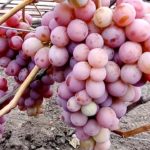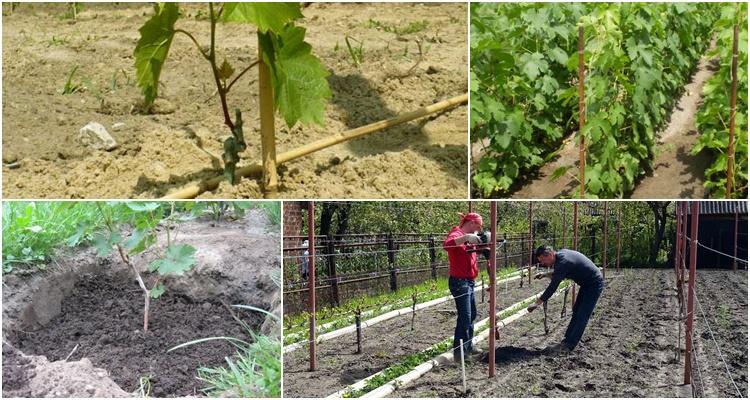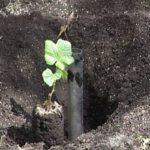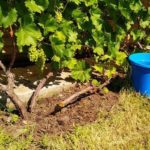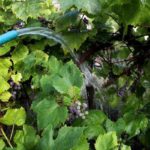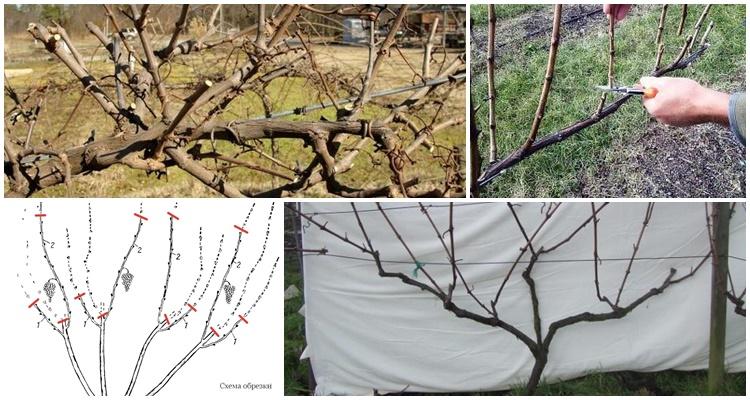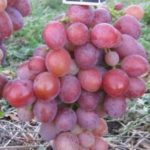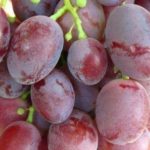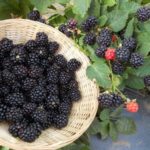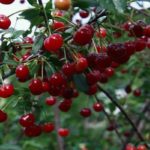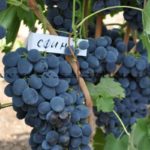Among the large number of fruit crops, it can be difficult to choose the type of plant to grow on your site. For many years, the Lilac Fog grape variety has been in demand among gardeners. The unpretentious vine, the bright taste of the berries and the ability to store and transport the crop over long distances attract not only private owners, but also large farms.
Description and characteristics of Lilac Fog grapes
When creating Lilac Fog, the famous breeder Nikolai Vishnevetsky crossed several varieties. Based on Kesha 1, Cherry and Rizomat. The result is a crop that is disease-resistant and has a raspberry aftertaste.
The fruit ripening period is about 4 months. The timing depends on regional weather conditions. In the south, harvest starts earlier.
Lilac mist grape bushes reach 4 meters in height. Other characteristics of the variety:
- The robust vine is covered with large dark green leaves.
- The clusters have a conical shape and weigh from 700 grams to 1 kilogram.
- Ripe berries are pink with a lilac tint.
- The weight of the fruit is 20-40 grams. The pulp is juicy, there are few seeds.
The sweet, but not cloying taste attracts winemakers. Lilac mist is often used to produce various desserts and drinks.
Advantages and disadvantages of the variety
The plant is common among winegrowers in Ukraine and Russia. The variety has a set of positive qualities. For the unusual raspberry taste of the berries, the culture was even awarded a special international prize at a competition in Yalta.
Minor deficiencies of the variety can be corrected by following agrotechnical care recommendations.
Rules for growing a plant
The rooting of grape shoots on the site depends on the quality of the planting material.
Selection of seedlings
Experienced winegrowers never purchase seedlings from unknown sellers. For seedlings, it is recommended to contact farms engaged in mass cultivation of the crop.
Preference is given to seedlings harvested in the fall and overwintered in a special nursery. Such shoots will quickly take root in new conditions and begin to grow.
Landing
For planting, choose an area in the southern or western part of the garden. The vineyard is placed in an open place, without trees shading the sunlight.
The best time to place seedlings in the ground is spring. In order for the plant to take root on the site:
- Work begins only when stable warm weather sets in. The earth at a depth of 30 centimeters should warm up to 10 °C.
- The cuttings are left in water for a day.
- Dig a hole with a diameter of 80 centimeters and the same depth.
- Potassium fertilizers and superphosphate are poured into the bottom of the pit and mixed with the soil.
- The seedling is placed in a hole and covered with earth. The plant is watered abundantly.
Autumn planting of grapes is carried out before the onset of the first cold weather, so that the shoots acclimatize. For the winter, immature sprouts are insulated with sawdust or dry branches.
Further care
The Lilac Fog grape variety does not require special conditions for development. It is important to carry out the necessary agrotechnical measures in a timely manner.
Watering the crop
The plant needs regular watering. Up to 30 liters of water are added to each bush. The soil is irrigated as it dries.To ensure access of oxygen and beneficial microelements to the root system, the soil is regularly loosened. The procedure is carried out after each session of moistening the plot of land under the vineyard. Don't forget to weed.
Fertilizer application
Lilac mist grapes must be regularly maintained with the help of mineral and organic complexes:
- Before flowering, the plant is treated with a solution, which is prepared by adding 30 grams of potassium nitrate to 10 liters of water.
- During the fruiting period, grapes are fed with ammonium nitrate. The recommended dosage is 50 grams of the drug per 10 liters of liquid.
- In autumn, the soil is enriched with humus or peat is added.
All care procedures are completed before frost sets in.
Trimming
Grape yield depends on timely pruning of the vine. In spring, carefully remove damaged or dried shoots. Unfruitful areas are uprooted.
In summer, it is recommended to inspect the bushes at least once a week and cut off dry branches. The vine is pinched and excess shoots are removed.
Resistance to pests and diseases
Lilac Mist is resistant to most ailments. But some diseases require preventive measures:
- Fruit rot is combated with chemicals. “Oxychom” or “Zircon” are effective. The plant is sprayed every 10 days.
- Olive spot is removed with colloidal salt. Treatment is carried out once a week.
- The invasion of the codling moth is stopped using a manganese solution. This remedy is used once a decade.
The greatest danger to grapes is root rot, treatment for which has not yet been developed. Therefore, the diseased plant must be uprooted.
Harvest and storage
The variety has good keeping quality and transportability.It is recommended to store Lilac Mist in rooms with good ventilation. It is important to maintain temperature conditions. The optimal range is considered to be from minus 2 to plus 8 °C. Choose a dark place. Light negatively affects the sweetness of fruits, triggering the processes of sugar destruction.
The fruits are well preserved in boxes with paper or clean sawdust spread on the bottom. Before planting, the bunches are checked and spoiled berries are removed.
The Lilac Mist grape takes root well in different climates. When choosing high-quality seedlings and observing agrotechnical conditions, the first harvest of berries is harvested after 3 years.


